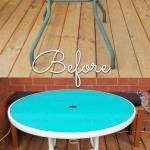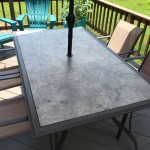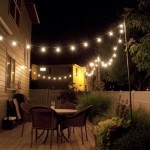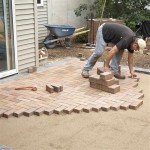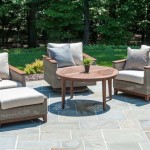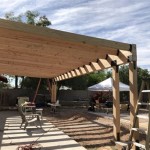Examples of Patio Pavers: Design Options for Outdoor Spaces
Patio pavers offer a durable and aesthetically pleasing solution for creating inviting outdoor living spaces. The versatility of pavers stems from the wide variety of materials, shapes, sizes, colors, and patterns available. Selecting the right paver depends on various factors, including the desired aesthetic, intended use of the patio, budget constraints, and environmental conditions. This article explores several examples of patio pavers, detailing their characteristics, benefits, and applications.
Understanding Paver Materials: Concrete, Brick, and Stone
The material composition of a paver significantly impacts its durability, appearance, and maintenance requirements. Concrete, brick, and natural stone are among the most common paver materials, each possessing unique properties.
Concrete Pavers: Concrete pavers are manufactured units composed of cement, aggregates, and pigments. They are available in a vast array of shapes, sizes, and colors, mimicking the appearance of natural stone or brick. Concrete pavers are a cost-effective option, known for their strength and resistance to cracking and weathering. Interlocking concrete pavers, designed with specifically shaped edges, provide increased stability and prevent shifting. The manufacturing process allows for consistent dimensions and textures, facilitating easier installation and creating uniform surfaces. Concrete pavers can be sealed to enhance their color and protect them from staining and fading. Different finishes, such as tumbled or exposed aggregate, offer varied aesthetic options.
Brick Pavers: Brick pavers, typically made from clay fired at high temperatures, offer a classic and timeless aesthetic. Their warm, earthy tones and natural variations contribute to a rustic charm. Brick pavers are known for their durability and resistance to wear and tear. They retain their color well over time, even with exposure to sunlight and weather. Brick pavers can be laid in various patterns, such as herringbone, basket weave, or running bond, to create visually appealing surfaces. While generally more expensive than concrete pavers, brick provides a distinct aesthetic appeal and can increase property value. The natural texture of brick provides good slip resistance, making it a safe choice for walkways and patios.
Natural Stone Pavers: Natural stone pavers, such as flagstone, slate, granite, and travertine, offer a unique and luxurious appearance. Each stone possesses natural variations in color, texture, and pattern, creating a one-of-a-kind patio surface. Natural stone is incredibly durable and can withstand harsh weather conditions. The porous nature of some natural stones requires sealing to prevent staining and water damage. Natural stone pavers are generally more expensive than concrete or brick pavers due to the extraction, processing, and transportation costs. The irregular shapes and sizes of some natural stones can make installation more challenging, requiring skilled craftsmanship. The natural texture of stone provides excellent slip resistance. Different types of stone offer various aesthetic options, ranging from the rustic look of flagstone to the smooth elegance of travertine.
Exploring Paver Shapes and Sizes: Rectangular, Square, and Irregular
The shape and size of pavers influence the overall design and aesthetic of the patio. Rectangular, square, and irregular shapes offer different design possibilities and installation considerations.
Rectangular Pavers: Rectangular pavers are a versatile choice, suitable for various patio designs. Their elongated shape allows for linear patterns, such as running bond or herringbone, creating visually appealing surfaces. Rectangular pavers are easy to install and can be used to define specific areas within the patio. Different sizes of rectangular pavers can be combined to create interesting patterns and textures. Large rectangular pavers can create a more modern and minimalist look, while smaller rectangular pavers offer a more traditional aesthetic. Rectangular pavers are often used for driveways and walkways due to their ability to withstand heavy loads.
Square Pavers: Square pavers offer a clean and symmetrical aesthetic. They are easy to install and can be laid in simple patterns, such as a grid or checkerboard. Square pavers are often used for creating a formal or contemporary look. Different sizes and colors of square pavers can be combined to create visual interest. Large square pavers can create a sense of spaciousness, while smaller square pavers offer a more intimate feel. Square pavers are a good choice for patios with geometric shapes or clean lines.
Irregular Pavers: Irregular pavers, often made from natural stone, offer a unique and organic look. Their varying shapes and sizes create a natural and informal aesthetic. Irregular pavers require more careful planning and installation to ensure a stable and visually appealing surface. The irregular shapes can create interesting patterns and textures, adding character to the patio. Irregular pavers are a good choice for creating a rustic or naturalistic landscape. The gaps between irregular pavers can be filled with gravel, sand, or ground cover, adding to the natural aesthetic. The varied sizes and shapes of irregular pavers can make the installation process more time-consuming and labor-intensive.
Analyzing Paver Colors and Patterns: Creating Visual Interest
The color and pattern of pavers play a crucial role in defining the overall aesthetic and visual appeal of the patio. Colors can be chosen to complement the surrounding landscape and architecture, while patterns can add visual interest and create specific design effects.
Color Considerations: Paver colors range from natural earth tones to vibrant hues. Neutral colors, such as gray, beige, and brown, are versatile choices that blend well with various architectural styles and landscape designs. Warm colors, such as red, orange, and yellow, can create a welcoming and inviting atmosphere. Cool colors, such as blue, green, and purple, can create a calming and relaxing environment. Darker colors can create a more formal or sophisticated look, while lighter colors can create a more casual or relaxed feel. The color of the paver may fade over time due to sun exposure; therefore, choosing pavers with integral color or applying a sealant with UV protection is recommended. Color blending, using pavers of slightly different shades, can create a more natural and textured effect.
Pattern Options: Paver patterns can significantly impact the visual appeal of the patio. Common patterns include running bond, herringbone, basket weave, and circular. Running bond, where pavers are laid in a staggered pattern, is a simple and classic choice. Herringbone, where pavers are laid in a zigzag pattern, creates a dynamic and visually interesting surface. Basket weave, where pavers are arranged in alternating pairs, offers a textured and visually appealing design. Circular patterns can create a focal point and add a unique design element to the patio. Combining different paver sizes and colors within a pattern can create even more visual interest. The chosen pattern should complement the shape and size of the patio and the surrounding landscape.
Borders and Accents: Borders and accents can be used to define the edges of the patio and add visual interest. A border can be created using pavers of a different color, size, or material than the main patio surface. Accents can be created by incorporating small groups of pavers in a contrasting color or pattern. Borders and accents can also be used to highlight specific features of the patio, such as a fire pit or seating area. The use of borders and accents can enhance the overall design and create a more polished and sophisticated look.
In conclusion, the selection of patio pavers involves careful consideration of material, shape, size, color, and pattern. Each element contributes to the overall aesthetic, durability, and functionality of the outdoor space. By understanding the characteristics and properties of different paver options, homeowners can create a patio that enhances their property and provides a comfortable and inviting outdoor living area.

Paver Patio Ideas Landscaping Network

96 Paver Patio Ideas For A Stunning Outdoor Space

31 Paver Patio Ideas For Your Home

31 Paver Patio Ideas For Your Home

Pavers Patio Design Contractor Company Northern Va
5 Patio Designs That Wow Unilock

Paver Patio Ideas S Belgard Pavers

Patio Pavers Landscaping Designs Arbor Hills Trees

Patio Pavers Landscaping Designs Arbor Hills Trees

10 Patios That Use Paver Patterns To Make A Statement Unilock

